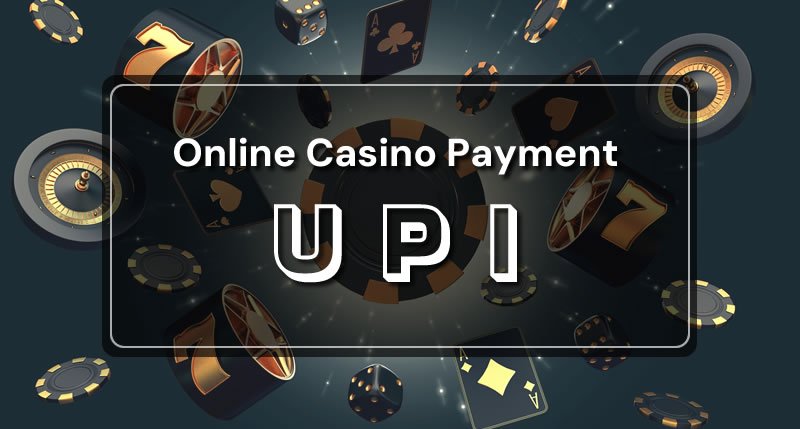What UPI is for Teen Patti players
UPI is India’s instant bank-to-bank system run by NPCI. It moves money directly between accounts. No card rails sit in the middle. You approve each payment inside your UPI app with a PIN or device auth. It is fast, simple, and built for small and large everyday payments.
Two things make it work for gaming cashiers. First, virtual payment addresses (VPAs) let you pay without typing account numbers. Second, QR codes and deep links hand you from the casino cashier to your UPI app with the details filled in. The transfer is still bank-to-bank. The cashier never sees your card. Most offshore sites do not “run UPI” themselves. They plug into payment gateways that support UPI collection. You will still see your UPI app, your bank name, and the payee display name before you approve. That confirmation screen is a 2025 UX norm. It helps you avoid sending money to the wrong handle.

Quick definitions in plain words, since the terms show up across this page. A VPA is your UPI handle (like name@bank). A UTR is the unique transaction reference the system assigns to a completed transfer. P2M means person-to-merchant. P2P means person-to-person. Most casino cashier deposits use P2M. For fees, the rule is simple for players. UPI is normally fee-free for retail users. Any merchant discount rate (MDR) that exists applies to the merchant side. Casinos sometimes add their own “gateway fee.” That is not a UPI fee. It is a line item the site chooses to charge. You will see it in the cashier if they do.
UPI Teen Patti deposits (UPI casino India)
Cashiers show two working patterns. The first is a collect/intent flow. You enter your VPA in the cashier. The site triggers a collect request to your UPI app. You open the app, check the payee display name, confirm the amount, and authorise with your UPI PIN. After approval, come back to the cashier. It should pick up the status and show success. If money leaves your bank, you will have a UTR in your app’s history. Good cashiers also capture that UTR in the deposit record.
The second pattern is a QR or app jump. The cashier shows a QR. You scan it with your UPI app, or you tap a deep link button for Google Pay, PhonePe, or Paytm. The amount and payee are prefilled. You approve in-app. On return, the cashier polls for status. A small spinner is normal for a few seconds. Do not close the page until you see the final message. A few ground rules keep both flows smooth. Always confirm the exact VPA or QR inside your logged-in session. Do not copy handles from chat or email. Start with a small first deposit to validate routing. Keep the UTR and timestamp from your app. If the page says “pending,” do not spam retries. Wait for the final status first.
To satisfy “upi casino india” search intent once, here is the point most people want: a reputable UPI-enabled India-facing cashier will clearly show you the payee name and capture the UTR after you approve in your UPI app.
UPI withdrawals from Teen Patti apps
Withdrawals almost always go to your bank account. Some cashiers label it “UPI/bank.” Others say “bank transfer.” Under the hood it is the same bank credit. Operators try to pay back to the same rail you used, but refunds through UPI are tighter than card rails, so a standard account credit is common.

Expect a minimum withdrawal in the ₹500-₹2,000 range. Expect manual review on the first cash-out. Many operators hold the first payout until your KYC is green. If the payment goes out, you can ask support for the UTR as proof. Your bank statement will also show a reference. Timelines vary. Minutes to a few hours is normal on a good day. It can take longer in maintenance windows, at night, or if extra checks trigger.
To satisfy “UPI withdrawal Teen Patti” intent once, here is the simple rule: complete casino KYC before you request the first cash-out, then provide your correct name and bank details so the credit lands without a mismatch.
UPI limits snapshot
| Mode / Feature | Per-txn cap | Daily cap | Who sets it | Notes (2025) |
|---|---|---|---|---|
| Standard UPI (P2M) | Up to ₹1,00,000 | Bank-defined | NPCI + your bank | NPCI FAQ allows up to ₹1 lakh per txn; banks/apps may impose lower caps. |
| Higher-limit categories | ₹2L or ₹5L | Bank-defined | NPCI | Capital Markets/Insurance/Collections/FIR up to ₹2L; IPOs & RBI Retail Direct up to ₹5L. |
| Select-category daily cap | — | Up to ₹5,00,000 | NPCI | Applies to specific sectors (e.g., healthcare/education/tax); not general gaming. |
| UPI Lite / Lite X (incl. offline) | ₹1,000 / txn | ₹10,000 / day | NPCI + app | Good for micro-deposits; Lite balance cap ₹5,000; Lite X works without data. |
| Hello! UPI (voice/on-call) | ₹1,000 / txn | 5 txns / 24h | NPCI | Feature-phone/voice flow; niche adoption. |
Typical fees (MDR)
For retail users, UPI has no MDR. You should not see a bank fee to make a standard UPI payment from your app. Merchants and gateways may have MDR-like charges between them. Some offshore operators add a small “gateway” or “processing” line item on deposit. If you see it, it is a site decision. You can choose a different method, a smaller top-up, or another brand. On withdrawals, banks do not charge you for receiving a standard account credit. If a site deducts a fee on payout, it is a site rule. It should be visible in the cashier or T&Cs.
KYC with UPI vs. casino KYC: what each checks
Your UPI KYC sits with your bank and your UPI app. It links your mobile number, device, and bank account. It enables sending and receiving on UPI with your PIN. This is separate from any gaming site.
Casino KYC is the operator’s due diligence. They check ID, address, and sometimes source of funds. Many India-facing operators apply a “verify before first withdrawal” rule. If your name on the casino account does not match your bank account, the payout can bounce or get held. If your document scan is blurry, review takes longer. Do this early. Upload a clear ID and a simple bank proof (like a passbook or statement header). Then your first cash-out goes faster.
Tax rules also nudged operators to tighten checks in 2025. Deposits and bets can fall under the 28% GST regime for money gaming. That pushes sites to log more detail about users and flows. KYC is where they enforce it.

UPI response codes in Teen Patti cashiers
Real users do not see perfect “instant” every time. Banks have maintenance windows. Gateways switch routes. Apps time out. The cashier might show “pending” while your app shows “processed.” That gap is normal for a short time. The right move is to track the UTR and wait for the final postback.
Some codes you may hear from support or see in a help article map to standard UPI responses. Timeouts mark a payment as pending. Merchant handle issues trigger immediate declines. Duplicate RRNs cause confusion on retries. A device or SIM mismatch can block authorisation. Fraud controls can flag a merchant as blocked in your app. Do not brute-force it. Change one variable at a time: wait, then try a different UPI app or the same app after a short pause, or ask support for an alternate VPA.
| Code | Meaning | What to do in the cashier |
|---|---|---|
| 091 | Timeout / pending | Do not re-initiate at once. Wait for final status; if debited, share UTR + time with support for reconciliation. |
| 03 | Merchant VPA not found | Reopen cashier; fetch the exact VPA/QR inside the session. Avoid manual typing from chat/email. |
| 04 / 05 | Technical decline / unauthorised | Retry once after a short wait. If it repeats, switch gateway (if offered) or try another UPI app. |
| 10 | PIN/auth error | Reset UPI PIN; ensure device SIM and bank linkage match before the next attempt. |
| TM / S2–S3 | Requestor blocked / flagged as spam | Unblock the merchant in your UPI app or ask support for an alternate VPA. |
| U20 / U21 | Authorisation timeout / not found | Cancel, confirm no debit, then start a fresh request from the cashier. |
| DF | Duplicate RRN | Give support the UTR and timestamp; wait for reconciliation before retrying. |
When to Use UPI Lite (and Lite X) for Microdeposits Teen Patti
UPI Lite is a PIN-free way to approve tiny payments from a pre-loaded balance. It is capped at ₹1,000 per transaction and ₹10,000 per day. Your Lite balance itself is capped at ₹5,000. Lite X extends this to offline scenarios, so you can authorise even without data for a short time. For gaming budgets, this helps if you like small top-ups and want fewer PIN prompts. It is not for larger deposits. If a cashier does not support Lite, your app will fall back to standard UPI.
Speed and success rates
“Instant” is the pitch, and often it is true. On a good route, deposits land in seconds. But a few normal things slow it down. Banks run nightly jobs and maintenance. Gateways throttle heavy traffic. Your app might get stricter about repeated status checks in 2025. If you keep tapping refresh or spam balance checks, the app can rate-limit you. A clean approach wins: approve once, return to the cashier, wait for the result, and escalate only if you see a debit with no success update after a short window.
Withdrawals take longer because a human or a rule engine reviews them. A verified account with a clean history moves fastest. Name mismatches, bonus conditions, or rapid in-out patterns can trigger a hold. Give clear documents, and do not try to outrun a hold with new requests.

Compliance snapshot (2025) – tax, rules, policy flux
India’s tax approach to online money gaming remains strict in 2025. Operators account for 28% GST on the face value of deposits or bets inside their systems. Different states also publish notes or warnings. Cabinet-level moves hit the news this year. Platforms tighten KYC, payment flows, and record-keeping in response. For players, the takeaways are simple. Read the cashier limits page. Keep your ID ready. Expect checks before the first payout. And follow current local guidance. This page is informational and not legal advice.
Pros & cons of using UPI for Teen Patti
- Pros: instant INR, no card sharing, widely supported apps (Google Pay, PhonePe, Paytm), normally no fee to users, micro-top-ups with UPI Lite.
- Cons: bank/app limits can block big deposits; occasional timeouts; some cashiers add “gateway fees”; stricter KYC before withdrawals; category caps do not extend to gaming.
Safer payments checklist
- Confirm the cashier’s exact VPA/QR inside your logged-in session.
- Start with a small test deposit (₹300-₹500) to validate routing and UTR capture.
- If a payment shows 091 pending, don’t spam retries; wait for final status.
- Save the UTR + timestamp; screenshot success screens.
- Finish casino KYC early to avoid withdrawal holds.
- Prefer apps with Indian support hours and clear limits pages.
- Keep within your daily/self-set limits; consider UPI Lite for micro-budgets.
Common UPI Teen Patti deposit errors
Wrong VPA is the easiest mistake. If you typed a handle by hand, close the payment, re-open the cashier, and fetch a fresh VPA or QR inside your session. Many gateways rotate handles. A stale handle will fail or route funds to a closed account.
Stale collect requests cause confusion too. You enter your VPA, step away, and come back hours later. Your app may show an old request still sitting there. Decline it and start a new one from the cashier. Do not approve a request if you are not sure it matches the exact amount on the screen. Merchant blocked is another gotcha. Some UPI apps let you mark a payee as spam. If you did that once, new requests will fail. Unblock the payee in app settings, or ask the cashier for an alternate VPA. Device or SIM mismatch can kill authorisation. UPI links your phone number and device to your bank account. If you changed SIMs, cleared the app, or switched phones, reset your UPI registration and PIN before you try deposits.
Bank downtime shows up as timeouts and pending statuses. You will see code 091 in help articles for that. Do not retry five times in a row. Wait for the final status. If the account debits, you will have a UTR. Share it with support and let them reconcile before you move again. One more 2025 point: repeated balance checks and status pings can hit rate limits. If the app nudges you to slow down, follow it. Too many checks in a short window can block new authorisations for a while. For “teen patti deposit UPI” search intent once, the best practice is simple: use a fresh cashier session, verify the payee name, approve once, keep the UTR, and let support reconcile any pending case before you try again.
Editor’s notes for internal links & UX blocks (for teen-patti.expert)
Add one internal link to the Bet on / 20-20 Teen Patti rules and odds hub, and one to the Teen Patti providers page that compares Ezugi and Pragmatic Live. Place a sticky Deposit limits anchor above Table 1 and a Troubleshooting anchor above Table 2. Keep a short responsible-play footnote in the footer that says the page is informational and for 18+ audiences.
FAQ – UPI Teen Patti payments (2025)
What is the maximum I can deposit in a single UPI payment?
For most categories the per-transaction cap is up to ₹1,00,000, subject to your bank’s app limits. Higher caps exist for select sectors like IPOs, not for gaming. Your bank can set stricter limits for your profile.
Are there fees on UPI deposits for players?
No, retail users are not charged MDR for standard UPI payments. If you see a “gateway fee” in the cashier, that is a site rule, not a UPI fee. You can accept it or choose a different method.
Why does my payment show pending in the cashier but debited in my app?
That is a timing gap. The cashier has not received the final status yet. Keep the UTR and timestamp. Open support and share both. Most cases resolve without a second attempt.
Can I use UPI Lite for small top-ups?
Yes, within ₹1,000 per transaction and ₹10,000 per day. Your Lite balance is capped at ₹5,000. If the cashier does not support Lite, your app will route through standard UPI.
Do I need casino KYC if my bank already did UPI KYC?
Yes. Casino KYC is separate. Many sites require it before the first withdrawal. Complete it early to avoid holds.
How long do withdrawals take?
It depends on review. After approval, the credit is usually fast. The first cash-out can take longer if documents are pending or names do not match.
Are rules changing in 2025?
Yes, policy moves and product updates keep coming. Banks tweak app limits and UX. NPCI adds categories and features. Read the cashier limits page and operator notices when you play.
Recent UPI rule changes to watch (press)
Major outlets reported higher caps for select categories and stricter app behaviour on repeated checks and autopay timing in 2025. NPCI FAQs and circulars remain the source of truth for limits, Lite/Lite X, and features.
Informational only. 18+ play responsibly. If you choose to play, follow local rules and your bank’s limits.